
- For PC
- For MAC
- For Linux
- OS: Windows 7 SP1/8/10 (64 bit)
- Processor: Dual-Core 2.2 GHz
- Memory: 4GB
- Video Card: DirectX 10.1 level video card: AMD Radeon 77XX / NVIDIA GeForce GTX 660. The minimum supported resolution for the game is 720p.
- Network: Broadband Internet connection
- Hard Drive: 17 GB
- OS: Windows 10/11 (64 bit)
- Processor: Intel Core i5 or Ryzen 5 3600 and better
- Memory: 16 GB and more
- Video Card: DirectX 11 level video card or higher and drivers: Nvidia GeForce 1060 and higher, Radeon RX 570 and higher
- Network: Broadband Internet connection
- Hard Drive: 95 GB
- OS: Mac OS Big Sur 11.0 or newer
- Processor: Core i5, minimum 2.2GHz (Intel Xeon is not supported)
- Memory: 6 GB
- Video Card: Intel Iris Pro 5200 (Mac), or analog from AMD/Nvidia for Mac. Minimum supported resolution for the game is 720p with Metal support.
- Network: Broadband Internet connection
- Hard Drive: 17 GB
- OS: Mac OS Big Sur 11.0 or newer
- Processor: Core i7 (Intel Xeon is not supported)
- Memory: 8 GB
- Video Card: Radeon Vega II or higher with Metal support.
- Network: Broadband Internet connection
- Hard Drive: 95 GB
- OS: Most modern 64bit Linux distributions
- Processor: Dual-Core 2.4 GHz
- Memory: 4 GB
- Video Card: NVIDIA 660 with latest proprietary drivers (not older than 6 months) / similar AMD with latest proprietary drivers (not older than 6 months; the minimum supported resolution for the game is 720p) with Vulkan support.
- Network: Broadband Internet connection
- Hard Drive: 17 GB
- OS: Ubuntu 20.04 64bit
- Processor: Intel Core i7
- Memory: 16 GB
- Video Card: NVIDIA 1060 with latest proprietary drivers (not older than 6 months) / similar AMD (Radeon RX 570) with latest proprietary drivers (not older than 6 months) with Vulkan support.
- Network: Broadband Internet connection
- Hard Drive: 95 GB
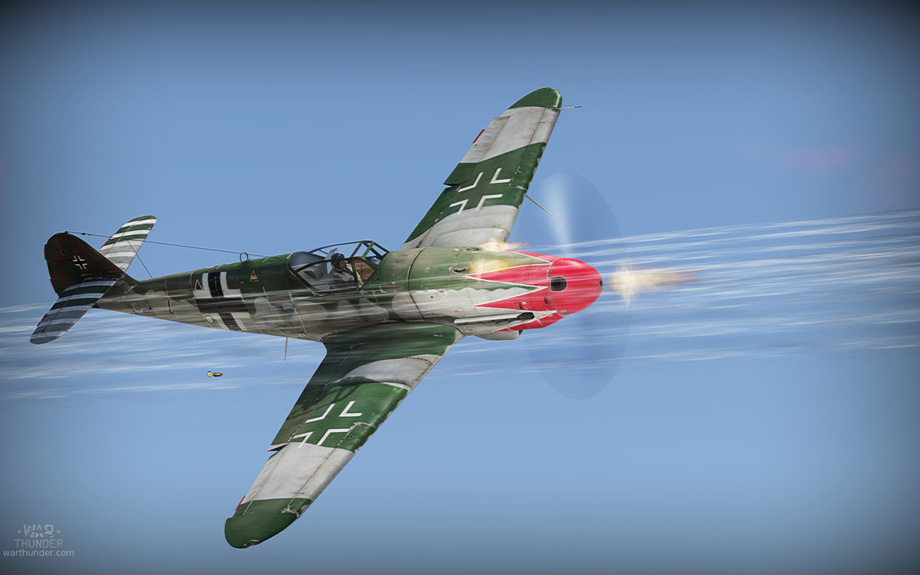
'Messerschmitt Bf 109 K-4 of the Jagdgeschwader 54' skin by PurpleMamba | download here
From 18.00 GMT on November 28th to 11.00 GMT on December 1st
30% discount on  conversion for all nations!
conversion for all nations!
25% more  for all kill assists!
for all kill assists!
100% more rewards for all squad achivements :
 Teamwork,
Teamwork,  Supporting Fire,
Supporting Fire,  The Best Squad!
The Best Squad!
These bonuses will encourage our players to use teamwork
and formations to achieve good scores and earnings.
Some of our previous articles have looked at a breakdown of squadron structures; in this we have detailed the composition of British squadrons of both the RAF and the Fleet Air Arm, and the organisation of the Imperial Japanese Army Air Force. This article will examine how the Luftwaffe set up its command and control functions, from the highest level down to tactical control in the air.
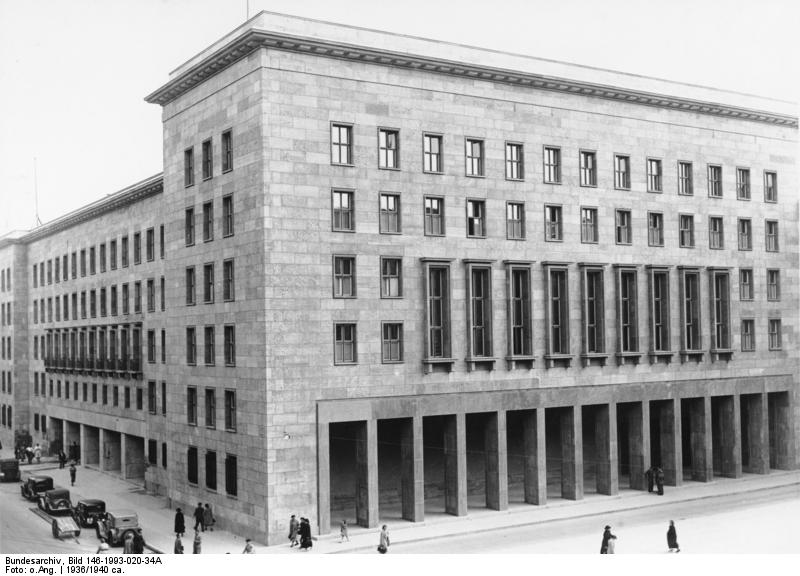 |
| Reichsluftfahrtministerium, Berlin |
At the highest level, the Luftwaffe comprised of the Reichsluftfahrt Ministerium, or Air Ministry, which was broken down into the Oberkommando der Luftwaffe: (Luftwaffe High Command) and the office of the Reichsminister der Luftfahrt (State Minister for Air). High Command exercised direction over the Luftwaffe as a military fighting force, whilst the State Minister for Air’s responsibilities were more concerned with administration, finances and aircraft production.
Luftwaffe High Command was further subdivided into a number of departments, covering areas such as operations, intelligence, equipment and organization. Furthermore, High Command was divided into a forward and rear eschelon for the majority of the war, codenamed ‘Robinson’ and ‘Kurfuerst’ respectively.
In terms of actual control over aviation on the front line, the largest unit size was the Luftflotte or ‘Air Fleet’. This was, in essence, a self contained fighting force capable of independent operations, in possession of its own fighters, bombers and reconnaissance aircraft. The Luftwaffe entered the war with four Luftflotten, but after areas of responsibility were divided it was deemed necessary to create a further two Air Fleets for operations in Scandinavia and the Soviet Union, as well as a dedicated home defense Fleet.
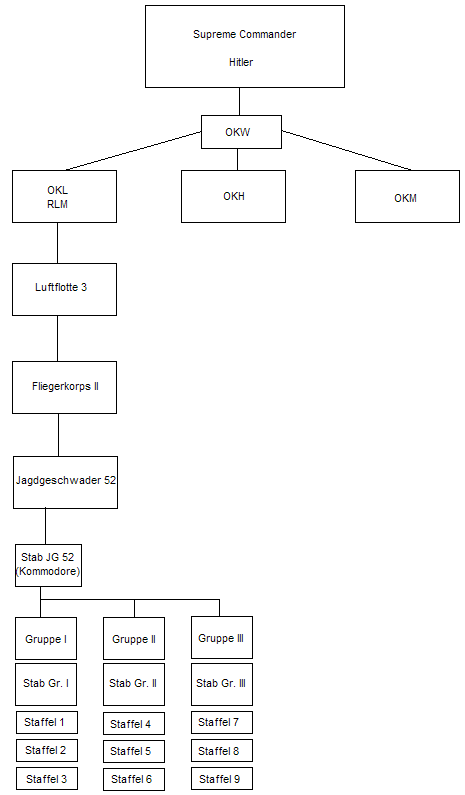 |
| Luftwaffe organizational structure |
In support of this was the Luftgau – an ‘Air Zone’ created for administrative purposes which consisted of a headquarters, administrative and supply staff and second line units. Whilst the Luftflotte was divided into several Luftgaue for support, a parallel organization also ran for operational duties – the Fliegerkorps or ‘Air Corps’. The Air Corps consisted of as many as 750 aircraft and again was given a geographical area for which it was responsible, although it was possible for one Luftflotte to lend a Fliegerkorps to another.
So far, we have looked only at the higher command functions and a level of detail which, on a day to day basis, was mainly of interest to high ranking officers. For the aircrews and ground crews on the front line, the largest organization in more practical terms was the Geschwader; this was commanded by an officer who’s rank could be Major, Oberstleutnant or Oberst (Major, Lieutenant Colonel or Colonel) depending on the size of the Geschwader and the casualty rate. It is important to make the distinction in the Luftwaffe between ‘rank’ and ‘post’ – rank was the military grade the individual held in terms of how they were addressed, their rank badges and their rate of pay. The post was in what role they were actually employed; hence a ‘Geschwader Kommodore’ was a role, not an actual rank. This was repeated at lower levels within the organization.
The Geschwader typically consisted of three Gruppen or Groups (roughly equivalent to an RAF ‘Wing’ or USAAF Group) but was also supplemented by a Stab, or HQ flight which consisted of four aircraft, flown by the Geschwader Kommodore and his unit level staff, such as the Geschwader adjutant and operations officer. Typically, a Geschwader was planned to have a strength of 94 aircraft, comprising of three Gruppen of 30 aircraft, plus the additional 4 of the Stab. However, this varied throughout the war due to availability and some units requiring a different make up due to more specialist tasking.
The Gruppe of approximately 30 aircraft were normally all stationed at the same airfield, although again this could vary. Therefore, it was typically at Gruppe level that much camaraderie and unit loyalty was created; the same body of men would live day to day, deploy to the front line and fight alongside one another at this level. A Gruppe also had an appointed Kommodore who was normally a Hauptmann (Captain equivalent) or Major. At this point it is again possible to draw attention to a noteworthy difference between the responsibilities of rank in different nation’s air forces; whilst a Hauptmann may well have found himself leading a Gruppe of 30 aircraft, the RAF equivalent of a Flight Lieutenant would typically be in command of a Flight of 6 aircraft.
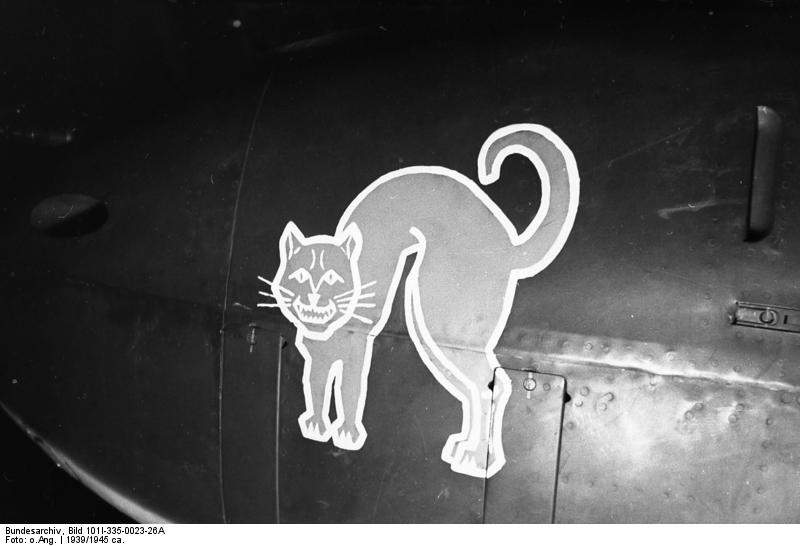 |
| Unit emblem of 2./JG 20 2. Staffel, I. Gruppe, Jagdgeschwader 20 |
The Gruppe consisted normally of three Stafflen (Squadrons) each of 9 aircraft, although once the German fighter force adopted the four aircraft Schwarm as its basic formation, the Luftwaffe fighter squadron would consist of 12 aircraft. Again, the Kommodore would lead a Stab of 3 or 4 aircraft. At Staffel or Squadron level, the differences in rank responsibilities were again highlighted: a Luftwaffe Staffelkapitaen would normally hold the rank of Oberleutnant (1st Lieutenant or Flying Officer equivalent) or Hauptmann. Again, a USAAF 1st Lt or RAF Flying Officer could expect to lead a flight or three or four aircraft at most, but would often be considered so junior as to only have themselves and their own crew to look after. During the war the standard strength of the Staffel rose to 16 aircraft, with the number of support personnel varying from the manpower intensive 150 required for single engine fighters, to only 80 in the case of bombers as the latter were supported by ground crews from their Luftgau.
This leads on to describing the Luftwaffe unit designation system, which at first might seem a little complicated to an outsider. The Geschwader was abbreviated to ‘G’ and then prefixed with a letter to describe its role; for example, JG52 was a Jagdgeschwader consisting of fighter aircraft whereas KG76 was a Kampfgeschwader or bomber unit. The Gruppe was then designated with a further prefix made up of roman numerals, so the second Gruppe of JG52 would be denoted as II./JG52. Within the Geschwader, Staffeln were given Arabic numerals with numbers 1,2 and 3 being attributed to I Gruppe, 4,5 and 6 to II Gruppe and so on. Therefore, 8./StG2 was the 8thStaffel of Stukageschwader 2; the fact that it was squadron number 8 meant that it must be part of III Gruppe, so there was no need for any further clarification in the title.
Whilst the information above in most cases describes units at full strength whilst engaged in conventional duties, there were variations in numbers, ranks and responsibilities at every level due to operational commitments, casualties and simply different organizations at different time periods during the war. However, even with variations often mentioned in historical narratives, hopefully this will help to give a very basic overview on how the Luftwaffe organized their assets during the Second World War.
Decal of the Stabsgruppe of the Jagdgeschwader 1 (Stab./JG 1), to be introduced to War Thunder with an upcoming update:
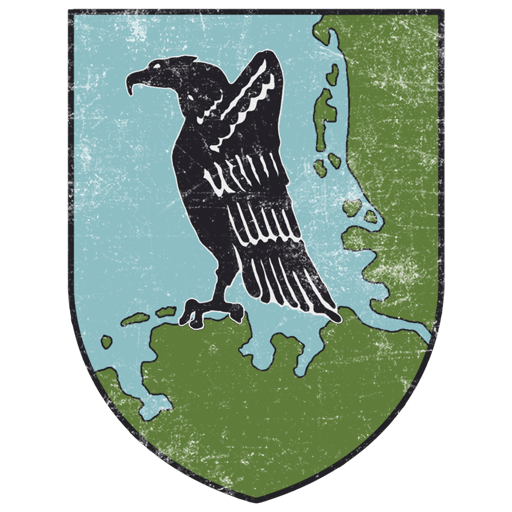
Decal created by Jej 'CharlieFoxtrot' Ortiz
About The Author
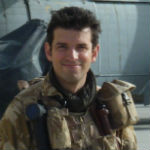 |
Mark Barber, War Thunder Historical Consultant Mark Barber is a pilot in the British Royal Navy's Fleet Air Arm. His first book was published by Osprey Publishing in 2008; subsequently, he has written several more titles for Osprey and has also published articles for several magazines, including the UK's top selling aviation magazine 'FlyPast'. His main areas of interest are British Naval Aviation in the First and Second World Wars and RAF Fighter Command in the Second World War. He currently works with Gaijin Entertainment as a Historical Consultant, helping to run the Historical Section of the War Thunder forums and heading up the Ace of the Month series. |



